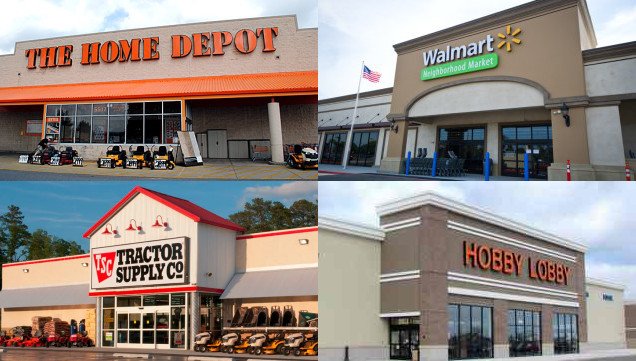Cap rates in the single tenant net lease big box sector rose 42 basis points to 6.50% from the fourth quarter of 2015 to the fourth quarter of 2016. The increase in cap rates can be primarily attributed to investor concern about the future of soft good retailers and the evolving size of floorplates for big box retailers.

Big box properties, especially mid box and large format stores, have a significantly higher price point than other net lease retail properties. This can cause re-leasing costs to be higher due to tenant improvement allowances and the possibility of dividing space for multiple smaller tenants in the future. The median asking price for net lease big box properties with investment grade tenants was $8.9 million in the fourth quarter of 2016.
In the fourth quarter of 2015, big box properties were priced at a 17 basis point premium to the overall net lease retail market. This was largely attributed to the large supply of Walmart Neighborhood Market properties in the market at the time. In the fourth quarter of 2016, the differential between big box cap rates and retail cap rates reverted to the norm with big box properties being priced at a 31 basis point discount to the overall retail market.
Despite the perception that the big box sector is solely large format big box stores including Walmart, Target and Home Depot, junior big box tenants like Hobby Lobby, Goodwill and PetSmart made up the majority of the supply in the fourth quarter of 2016. Junior big box accounted for 50% of the supply while mid box and large format made up 37% and 13% respectively. In the fourth quarter of 2016, approximately 25% of the big box supply was leased to investment grade tenants. The cap spread between investment grade and non-investment grade tenants compressed in the fourth quarter of 2016 to 15 basis points. In the fourth quarter of 2015, this spread was 155 basis points, again, due to the concentration of Walmart Neighborhood Market properties at the time.
The single tenant net lease big box sector will remain active as both individual and institutional investors seek net leased properties with higher yields than the overall net lease retail sector. However, investors will carefully monitor retailer’s store prototypes, especially as it relates to square footage as retailers continually shift the size of their stores. With changing retailer store formats, investors are paying greater attention to market rental rates and residual values when making acquisitions.
About the author: Randy Blankstein is President of net lease advisory firm The Boulder Group.